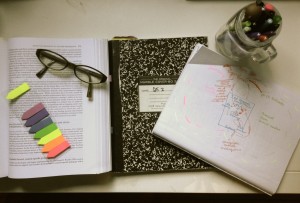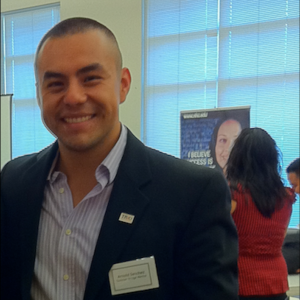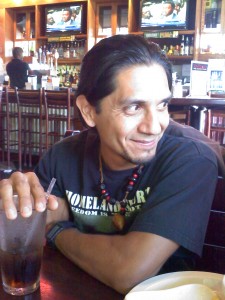I was motivated to write this entry for the Plenary hoping that my experience with the Chancellors Graduate Internship (CGI) will motivate other education PhD students to apply for the upcoming cycle. Since my conversation with Ethan Chang there have been a number of developments on the UC Santa Cruz Hispanic Serving Institution front. In writing this piece I was hoping to reflect on my experiences while acknowledging the positive contributions that others have made towards my development as a graduate student.
CONTEXT
The shifts in state demographics have resulted in a number of changes to the K-12 public schools as well as colleges and universities. Institutions of higher education are challenged by the opportunity of serving the needs of all students and to ensure that their students are prepared for life following their undergraduate studies. The federal government is addressing the impact of demographic shifts on higher education institutions through a federal grant program amended to the Higher Education Act of 1965. The U.S. Department of Education awards grants to universities that meet specific guidelines, including an enrollment of at least 25 percent Hispanic undergraduate students, as well as having at least 50 percent of those students coming from low-income backgrounds. UCSC is in the process of joining that list of federally designated Hispanic Serving Institutions.
THE EARLY STAGES OF THE CGI
As I reflect on my CGI experience, I can’t help but to think of the challenges, triumphs, and opportunities that I encountered with the project. In 2012, prior to my arrival at UCSC, a committee of faculty, staff and students was formed by UCSC administration to pursue the Hispanic Serving Institution designation. The designation was in part driven by the shifting demographics of the UCSC student body. At that time, the HSI committee did not have plans to apply for a Title V grant because the institutional research necessary to apply had not been conducted. My initial work helped provide the evidence to help substantiate the logic for why UCSC was prepared to apply for a Title V grant. This was the beginning of what would prove to be one of the most enriching experiences I have had as a graduate student. My work entailed a collaborative relationship between EOP, the institutional research assessment & policy team, the HSI committee, Dr. Mosqueda (my adviser), and UCSC’s data warehouse.
DATA ACCESSABILITY
Serving as a data liaison to establish statistical evidence to substantiate the HSI Grant application through institutional trend analysis was easier said then done as a variety of circumstances delayed my contributions. Data accessibility proved to be a major hurdle. The nature of my work involved access to student data that is protected for the safety of our students. To gain access to the data I needed to get clearance (FERPA training) and a variety of logistics needed to be addressed before I could acquire access. Shortly after having data access I encountered the difficulty of retrieving data. Writing reports to extract data was so complex that my first attempt at retrieving data caused the data retrieval system to crash campus wide.
PULLING THROUGH
As I was simultaneously familiarizing myself with the data infrastructure, the HSI committee was counting on me to provide the data trends to support the grant application. It was a tall order, and my biggest concern was the danger of misrepresenting the trends or not meeting the needs of the committee to proceed with the project. Luckily this is when a close collaborative relationship between the principal data analysts at data warehouse and myself emerged. Without this guidance I would have had major difficulties understanding the landscape of our data storage and retrieval systems on campus. I learned a great deal about data codes, data controllability, data compatibility, etc. I often found myself in a situation where the need for information was pivotal for the committee to identify the intentions of the grant and the points of intervention. Without this information the team was unable to proceed.
The pressure was real. There were moments when I felt that the fate of the project was in part based on whether or not I would be able to pull through with my work. However, I was not ready to give up on the HSI committee or our collaborators. The systemic change that could potentially arise from receiving a Title V grant motivated me to push forward, to learn quickly, and to produce accurate data trends to help UCSC identify specific areas where the university was encountering difficulties supporting students in pursuing their educational goals.
TRIUMPHS AND OPPORTUNITIES
Despite the challenges of my work, I feel that it is important to acknowledge the triumphs and opportunities that emerged from this internship. First, the data analytics of the project prompted the data warehouse personnel to construct new data-points that would assist with future institutional assessments. For example part of my work involved identifying the time to degree completion for students since their first point of entry to UCSC. A data point coding for time to degree completion did not exist prior to our work and this type of information needed to be derived through other methods and composite scores. Now data warehouse has started coding for time to degree completion and will make such data available, along with a variety of new variables accessible for future institutional assessments.
Second, I had the opportunity to work with a phenomenal group of individuals, including Pablo Reguerín who currently serves as the Executive Director for Retention Services and Director of Educational Opportunity Programs (EOP). Pablo served as the co-chair to the UCSC HSI Team, and I was humbled by his diligence and commitment to this work. He has been a true inspiration for me and provided guidance to help identify the types of issues I hope to research for my dissertation. Taken together, Pablo’s expertise as a practitioner exposed me to the nature of his work, which calls for immediate, and long-term substantive changes geared towards promoting and sustaining equity through comprehensive school reform and retention/student success.
WHAT NEXT?
Currently, there is no UC campus on the list of over 240 colleges and universities across the country awarded the Title V Part A grant, a Developing Hispanic Serving Institutions Program. If UCSC is awarded the grant the points of intervention that were identified by my collaborative work with EOP, the institutional research assessment & policy team, the HSI committee, Dr. Mosqueda, and data warehouse could bring meaningful pedagogical reform to the Math and Writing gateway courses on our campus. Receiving a title V grant would mean the beginning of substantive educational reform at UCSC. Furthermore if UCSC receives the Title V grant the need to conduct formative evaluations will be necessary, and I hope to be involved in this process if and when the time comes. Above all this internship opened new opportunities. I have made career-changing decisions and am now convinced that my research as a graduate student will focus on the experiences of students at both the high school and University level. In the mean time, Pablo-Reguerín has generously offered to keep me on his team post-CGI to help him and his staff inform data driven and evidence based campus interventions as well as potential future grant applications. I am certain that this opportunity will present itself with a new set of problems that will challenge me to expand my methodological toolkit and problem solving skills.
I urge the graduate students in our department to apply for the CGI. If I can be of service to anyone interested in applying please do not hesitate to contact me.
Deadline to apply for 2015-16 Chancellor’s Graduate Internship (CGI) Program: June 1, 2015



